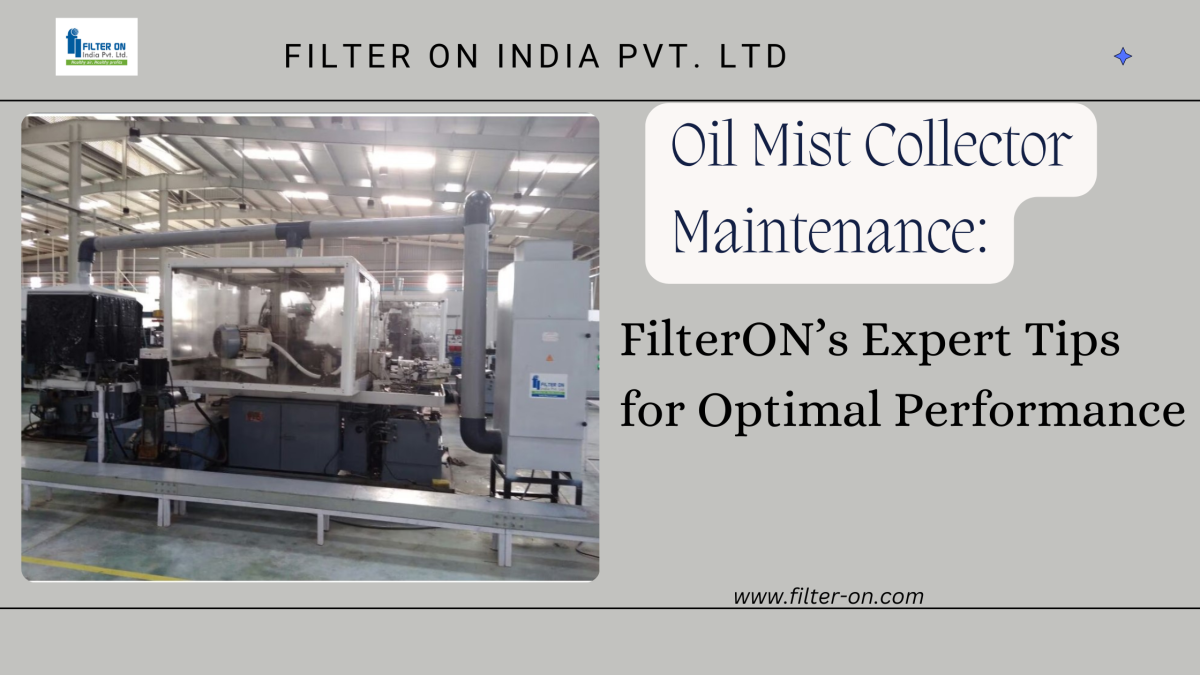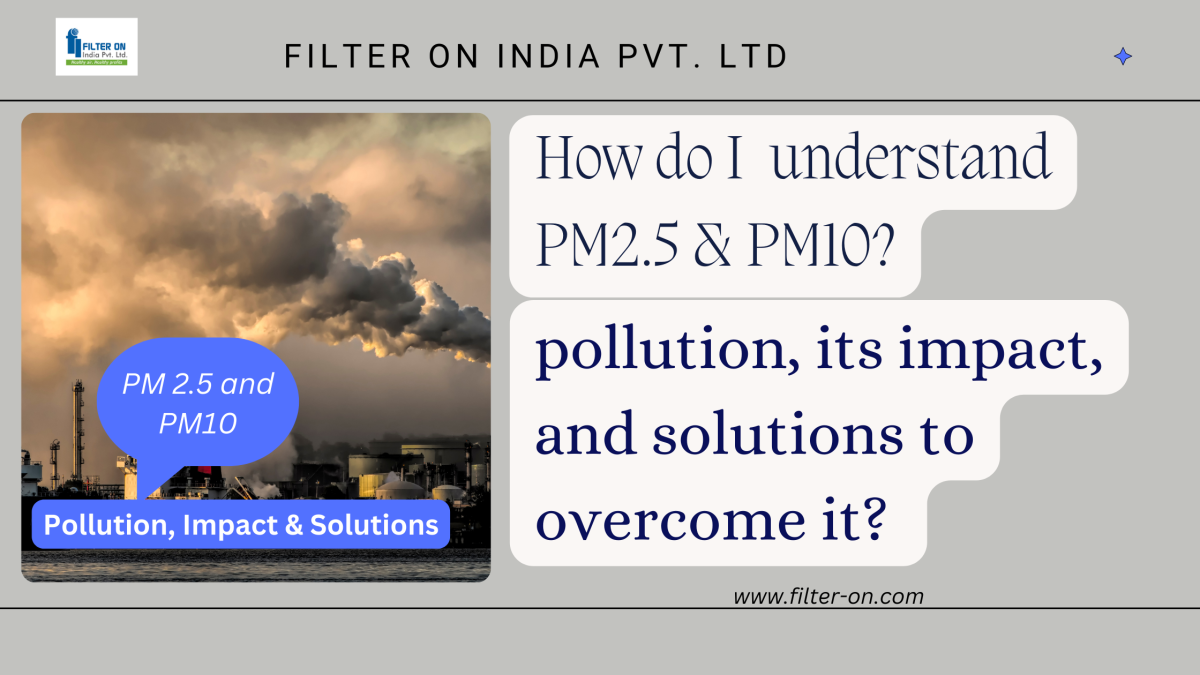Oil Mist Collector Maintenance: FilterON’s Expert Tips for Optimal Performance
In filtration industries, oil mist collectors play a vital role in collecting mist particles generated during the machining process, but do you know how to maintain an oil mist collector for optimal performance? What are the maintenance guidelines, i.e., tips to follow? We will see in today’s blogpost how one can clean and maintain an oil mist collector for optimal performance with Filter ON’s Maintenance Tips Guide.
Why do oil mist collectors need maintenance?
Proper maintenance of mist collectors is crucial for preventing safety hazards in the work environment. These devices capture harmful particles, preventing them from entering the workplace. Inadequate maintenance can lead to filter clogging and equipment failure, posing safety risks as well as the risk of costly component failures in the mist collectors. Regular maintenance of the oil mist collector ensures its optimal performance, which prevents escalating issues at the time of use and ensures workplace safety for workers.
Technology Wise: Oil Mist Collector Maintenance Tips
Every oil mist collector has different types of technology used, such as ESP (electrostatic precipitator) and mechanical/centrifugal mist collectors.
Want to know about health hazards related to welding fumes? Click here to read more.
Electrostatic Precipitator Technology:
If your mist collector is based on ESP technology, then you need to follow these maintenance tips:
Procedure of F1 Cleaning Powder Solution:
- Stir uniformly for 5 to 10 minutes to form a homogeneous solution.
- Dip or soak the ESP Cell (Stack) for 25 to 30 minutes in this homogeneous solution. (As per Clogged ESP Cell Condition & Stickiness of the Dust Particles in It).
- Remove the ESP Cell (Stack) from this solution and use a spray or gun to wash it with normal high-pressure water for 15-20 minutes. (The pressure limit is not more than 4 bars.)
- After properly washing the ESP cell, you must dry the ESP cell (stack) in direct sunlight or using compressed air (the pressure limit is not more than 3 bars).
- Dry it completely, make sure, and then install Stack in the ESP Cabinet.
- Filter ON -1 Cleaning Powder
- Large- volume water tanks open on top with drain provision at bottom.
- Dedicated cleaning location and drainage facility.
- High-pressure water
- Compressed air
- Material Handling Provision: Forklift/stacker, trolley, etc.
Every 1000 hours of operation and more often if the working conditions require it, clean the exterior and the suction mouth of the mist collector.
Programmed Maintenance:
In order to ensure the maximum efficiency of the air filter, it is necessary to undertake preventive programmed maintenance at regular intervals.
Filter, Seals, and Rotors Maintenance:
Cleaning the filters:
Careful and regular cleaning of all the internal parts (shell, drainage pipe, drainage ring, etc.) ensures high performance and long life of the air filter.
It is also important to routinely inspect the inside of the centrifuge and the turbine blades to remove any potential deposits of metal fragments, sludge, or other debris that might lead to a loss of balance in either the centrifuge or the turbine. to get rid of any potential deposits of sludge, metal particles, or other debris that might throw the centrifuge or turbine out of balance.
For the internal cleaning of the air filter and the rotators (either turbine or centrifuge), use a clean brush saturated in a mild industrial detergent solution. Alternatively, standard liquid soaps can be used. Should the dirt be very resistant, it is advisable to remove the rotor, use an alternative cleaning solution, and allow the centrifugal device to dry in the open air or dry with a jet of compressed air.
Structural Checks Required Yearly:
Each year:
Verify that the anti-vibration joints' nuts are securely tightened.
Every year:
Check the condition of the safety tie rods.
Check the good condition of the mist collector shell.
Every 4 years:
Replace the anti-vibration joints.
Benefits of Routine Maintenance of Oil Mist Collector Systems:
- Worker safety and well-being.
- Organizations bound by compliance.
- Durability of Equipment
- Operational Efficiency
In conclusion, centrifugal and ESP filter cleaning guidelines must be adhered to, and routine maintenance of oil mist extractors is crucial. This will allow workers to breathe clean air and extend the equipment's lifespan in compliance with regulatory standards and regulations.
Please contact us if you have any questions about fume extraction maintenance.
Email us: customersupport@filter-on.com.
Visit blogs to learn more about the critical features of clean air system design and air pollution control systems created by Filter On India.
Filter On India has been working towards “Mission Zero Pollution” for the last 40+ years as a clean air solutions partner for industries. We specialize and have expertise in welding fumes, oil mist, coolant mist, dust collection, soldering, laser marking, laser cutting, plasma cutting, fumes in fastener manufacturing, ball point tip manufacturing, oil quenching, kitchen fumes, etc. Filter On has 70+ clean air solutions, so you can contact us for more information about our solutions. You can reach us through the web or visit us at our corporate office at Pune and our virtual locations at Delhi, Bangalore, Ahmadabad, Hyderabad, or Chennai locations.








